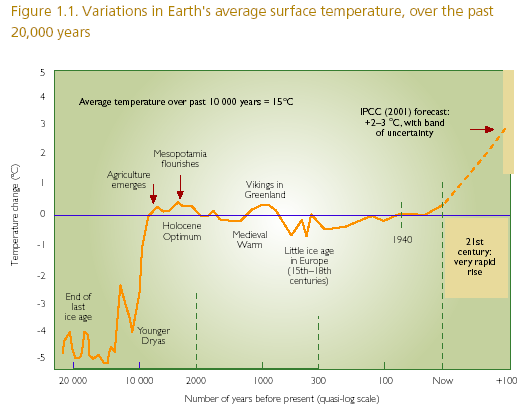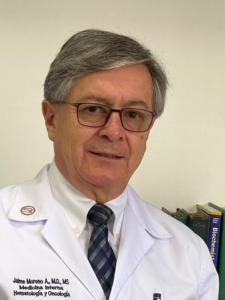Where there’s wildfire, there´s smoke! Climate crisis and health
By Jaime Moreno
The Australian bushfires began in June 2019. As of January 14, 2020, fires burned 186,000 square kilometers, as a reference 65 percent of Ecuador’s area. An estimated one  billion animals have been killed. Air quality has dropped to hazardous levels. By January 7, 2020, the smoke had moved 11,000 kilometers across the South Pacific Ocean to Chile and Argentina. As of January 2, 2020, NASA (National Aeronautics and Space Administration), estimated that 306 million tons of CO2 was emitted. (Wikipedia, 2020, Balmes JR, NEJM 2018).
billion animals have been killed. Air quality has dropped to hazardous levels. By January 7, 2020, the smoke had moved 11,000 kilometers across the South Pacific Ocean to Chile and Argentina. As of January 2, 2020, NASA (National Aeronautics and Space Administration), estimated that 306 million tons of CO2 was emitted. (Wikipedia, 2020, Balmes JR, NEJM 2018).
Climate Change and Human Health
With climate change, catastrophic wildfires are increasing around the globe, they are occurring in Australia, Canada, Chile, Indonesia, Portugal, Russia, and the United States at a rate five times as frequent on an annual basis as they were 50 years ago. Particulate matter (PM) is the principal pollutant of health concern from wildfire smoke because it can be inhaled into the alveoli. The 24-hour air-quality standard set by the U.S. Environmental Protection Agency (EPA) for fine particles (PM2.5, particles smaller than 2.5 μm) is 35 μg per cubic meter. In wildfires, it has exceeded 200 μg per cubic meter. (Balmes JR, NEJM 2018)

In recent decades, exponential increases in demographic, economic, commercial, and environmental indexes, particularly climatic, have been labeled the Great Acceleration. The projections by the United Nations is that today’s population of seven billion will increase to 9.3 billion by 2050. Rapid globalization has brought new, large-scale influences to bear on patterns of human health. Various global-scale changes are linked, for example, to the increased prevalence of obesity, changes in regional food yields, the emergence of infectious diseases, the spread of cigarette smoking, and the persistence of health disparities. (McMichael A.J., NEJM 2013)
A new era of Climate Medicine, is addressing for example, heat triggered renal disease, named chronic kidney disease of unknown origin (CKDu). It was first described in El Salvador in the 1990s, when large numbers of agricultural (sugarcane) workers began dying from irreversible, enigmatic renal failure. (Sorensen C., NEJM 2019)
The Climate Crisis and Clinical Practice
Both health workers, and the general public must think about heat related illnesses, from heat exhaustion progressing to heatstroke which is the most hazardous condition in a spectrum of illnesses (high mortality). Clinically, heatstroke is characterized by central nervous system (CNS) dysfunction, multiple organ failure, and extreme hyperthermia (usually >40.5 ºC). Classic heatstroke is epidemic, it occurs in children, in the elderly, chronically ill, often using medicines, sedentary, and whose skin may be dry. It occurs in children who were left in a car on a sunny day, and in elderly persons living alone, not drinking enough fluids. On the other hand, exertional heatstroke is sporadic, it occurs in post pubertal and active adults, with strenuous exercises, usually with wet skin. Athletes, police and military personnel, with excessive exercise, alcohol and drug abuse. (Epstein Y., NEJM 2019)
 Suggested Clinical Practice Improvements
Suggested Clinical Practice Improvements
(Salas R.N., NEJM 2020)
1. Emergency Services: Measurement of rectal temperature and initiation of cooling in the prehospital setting. Oxygen. Hydration. Provision of patient education on avoiding heat-related illness for patients who choose not to be transported to the hospital.
2. Triage protocols: Daily alert to clinical teams regarding extreme heat capable of resulting in peak burden of heat related illness. Implementation of heatstroke pathway for quick identification and treatment (e.g., obtain heat exposure and exertion history and rectal temperature for patients with fever).
3. Patient Screening: Flagging in electronic medical record for patients with high-risk medical conditions (e.g., cardiovascular or renal disease) and heat-sensitive medications. Screening for access to cool home environment (e.g., air conditioning units and financial means to operate them) or participation in high-risk occupation (e.g., outdoor work).
4. Interventions: Ensuring easy access to cooling equipment (e.g., immersion chambers, fans, and water-dispersion devices) in the emergency department. Considering changes to high-risk medications (e.g., antihypertensives, SSRIs), weighing benefit against theoretical risk.
5. Patient education and discharge: Follow-up calls or home visits after discharge for patients at high risk for heat-related illness. Provision of heat-index education and direction of patients to real-time updates to inform behavior. Instruction on risk factors for heat-related illness and on care of heat-sensitive medication (e.g. albuterol). Development of backup plan for cooling and electricity-dependent medical supplies at home or work in case of power outage.
6. Health care delivery: Implementation of team drills for clinicians and staff that simulate the limited-resource environment created by a backup generator or complete loss of power with generator failure. Analysis to identify future supply-chain vulnerabilities to proactively prepare treatment alternatives.
___________________________
Dr. Moreno writes the InfoHealth blog. 
For more information and the InfoSalud Spanish language version please click here.
Dr. Jaime Moreno Aguilar
Consultorios Santa Inés, Torre 1, Oficinas 003 y 102
Daniel Córdova y Federico Proaño
Teléfonos: 072843136 – 0997281884 – 0997257585
jaime.moreno@yahoo.com




















